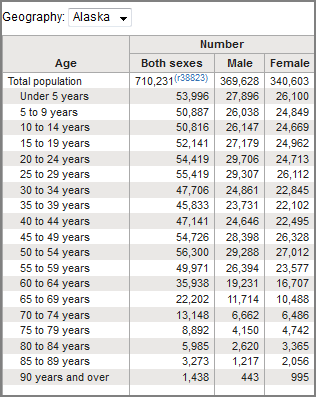Overview of AI in Healthcare
Chart : https://www.statista.com
Artificial Intelligence and Machine Learning systems proved that machines are better and faster than humans analyzing big data. Today, organizations have large datasets of patient data and insights about diseases through techniques like Genome Wide Association Studies (GWAS). Using AI, healthcare providers can analyze and interpret the available patient data more precisely for early diagnosis and better treatment. Today, it is possible to say whether a person has the chance to get cancer from a selfie using computer vision and machine learning to detect increased bilirubin levels in a person’s sclera, the white part of the eye.
Why AI in Healthcare?
- Better patient care: AI can provide better patient care by detecting diseases earlier and offering more efficient treatment methods. According to Frost & Sullivan’s research, AI has the potential to improve healthcare outcomes by 30 – 40%.
- Data-driven decision-making: With machine learning algorithms, AI can document and offer more insights about a patient’s status and help doctors make better data-driven decisions by providing a better picture.
- Time & cost saving for administrative tasks: AI can handle administrative tasks like patient registration, patient data entry, and doctor scheduling for appointment requests.
AI Healthcare Market
In 2016 AI healthcare market was estimated to be around $0.66 B
In 2021 AI market was expected to grow by 10 times to $6.7 billion.
In 2019 estimate is 41.7% compound annual growth rate to $1.3 billion
In 2025 the AI healthcare market is projected to be $13 billion
Over the last 4 years there has been a horizontal expansion in areas of implementation in healthcare. Companies like Cerner Corporation, IBM, McKesson Corporation ,GE Healthcare, Telstra Health, HotDocs, Health Engine are leading the healthcare revolution across the world.
1- Assisted or automated diagnosis & prescription: Chatbots can help patients self diagnose or assist doctors in diagnosis.
2- Prescription auditing: AI audit systems can help minimize prescription errors.
3- Pregnancy Management: Monitor mother and fetus to reduce mother’s worries and enable early diagnosis
4- Real-time prioritization and triage: Prescriptive analytics on patient data to enable accurate real-time case prioritization and triage.
5- Personalized medications and care: Analyze patient data to find the most effective and personalized treatment and helps reducing cost and increasing effectiveness of care.
6- Patient Data Analytics: Analyze patient and/or 3rd party data to discover insights and suggest actions. AI allows the institution (hospital, etc…) analyze clinical data and generate deep insights into patient health. It provides an opportunity to reduce cost of care, use resources efficiently, and manage population health easily.
7-Surgical robots: Robot-assisted surgeries combines AI and collaborative robots. These robots are well-suited for procedures that require the same, repetitive movements as they are able to work without fatigue. AI can identify patterns within surgical procedures to improve best practices and to improve a surgical robots’ control accuracy to sub-millimeter precision.
8- Early diagnosis: Analyze chronic conditions leveraging lab data and other medical data to enable early diagnosis
9- Medical Imaging : Advanced medical imaging to analyze and transform images and model possible situations.
10- Drug discovery: Find new drugs based on previous data and medical intelligence.
11- Gene analysis and editing: Understand genes and their components. Predict the impact of gene edits.
12- Device and drug comparative effectiveness : Helps review if drug or a new medical device are effective
13- Brand management and marketing: Create an optimal marketing strategy for the brand based on market perception and target segment.
14- Pricing and risk: Determine the optimal price for treatment and other service according to competition and other market conditions.
15- Market research: Prepare hospital competitive intelligence.
16- Operations: Process automation technologies such as intelligent automation and RPA help hospitals automate routine front office and back office operations such as reporting.
17- Customer service chat-bots: Customer service chat-bots allow patients to ask questions regarding bill payment, appointments, or medication refills.
18- Fraud detection: Patients may make false claims. Leveraging AI powered Fraud Detection tools can help hospital managers to identify fraudsters.











